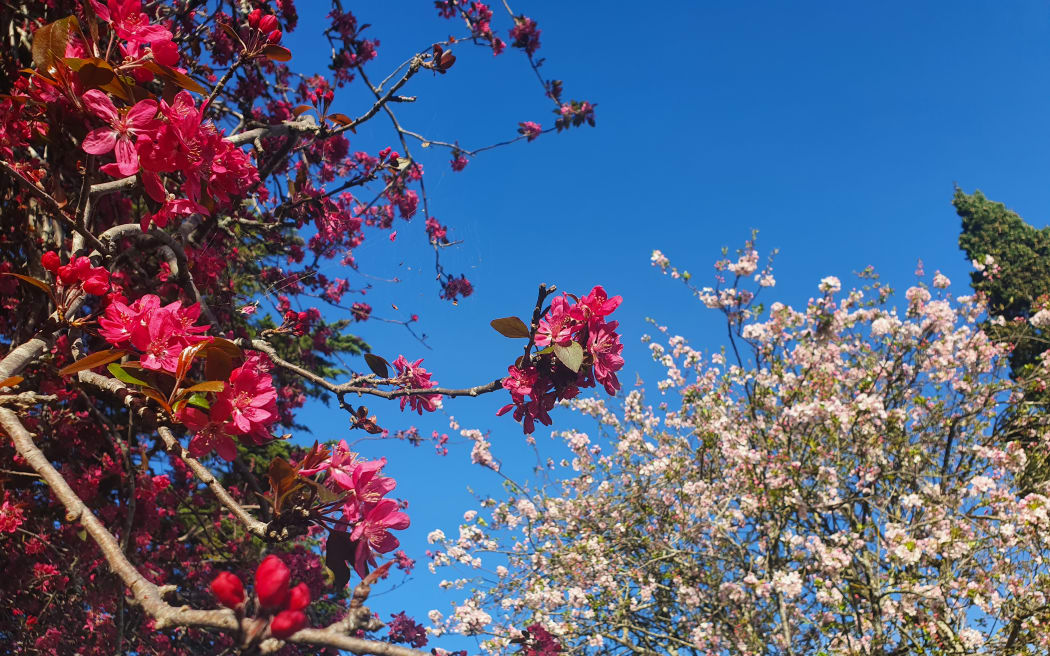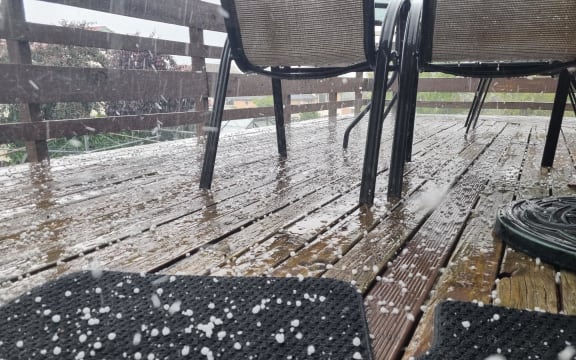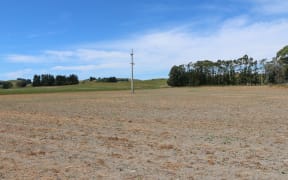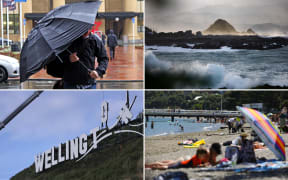
It was New Zealand's 10th-warmest spring since records began in 1909. Photo: RNZ/Sally Round
Most parts of the country recorded above-normal average temperatures in the past three months, researchers said on Tuesday.
The National Institute of Water and Atmospheric Research (NIWA) Seasonal Climate Summary for spring said above average mean temperatures - between 0.51C and 1.2C higher than the 1991-2020 average - were measured "in parts of every region of the country".
The overall mean of 12.8C was 0.7C higher than the 1991-2020 average, making it New Zealand's 10th-warmest spring since records began in 1909.
The highest temperature was recorded in Blenheim, which hit 30C on 23 November.
Three locations recorded their highest-ever average spring temperatures - Whakatāne (+1.3C), Mt Ruapehu Central (+1.4C) and Chatham Island (+1.5C).
Auckland was the warmest main centre overall (15.3C on average, 0.8C above 'normal'), particularly Whangaparāoa (second-warmest spring on record) and Western Springs (fourth-highest).
Dunedin was the coolest, averaging 11.7C - like Auckland, 0.8C above normal. Hamilton was particularly warm, 1C above normal at 14C.
Christchurch was the sunniest main centre, with 657 sunshine hours, closely followed by Tauranga on 643. Tauranga also the wettest main centre, with 329mm of rain during spring - 143 percent of normal.

The aftermath of a Dunedin hailstorm in early November. Photo: RNZ / Tess Brunton
Rainfall was also high in Gisborne, northern Hawke's Bay and central Northland, NIWA said, and above average in Bay of Plenty, southern Waikato, coastal parts of southern Hawke's Bay and Wairarapa, and inland parts of Otago.
The most rain fell on Milford Sound on 20 September - 234mm of it.
Two locations recorded their highest-ever spring maximum temperatures - Whangaparāoa (26.4C on 21 November) and Waikeria (29.7C on 22 November).
The lowest temperature was recorded at Mt Cook Airport on September 26, a chilly -5.9C. In contrast, Mt Ruapehu in the North Island had its highest-ever maximum spring temperature (12.8C).
Wellington was the least sunny of the main centres, and at just 0.5C above 'normal', the least extra-warm. It was the second-wettest behind Tauranga.
Māhia, Gisborne and Kaikohe all came close to breaking their spring rainfall records. Kaikohe was helped along by a record single-day 150mm of rain on 28 October, its highest spring rainfall on record. Russell and Lumsden also recorded spring highs.
The strongest wind gust was recorded at Hawke's Bay's Cape Turnagain on 17 September.





